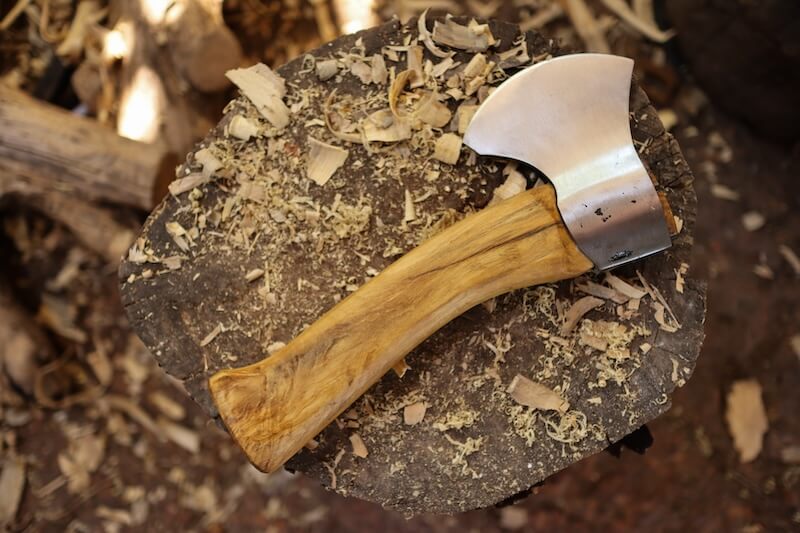Getting Started with Axe Woodcarving
 Embarking on the journey of woodcarving with an axe requires not only creativity and patience but also a disciplined approach to safety and technique. This craft, often viewed as rustic and raw, brings a sense of connection to the material as it transforms into functional and artistic items. For beginners, understanding the fundamentals of axe handling is crucial. The key is to start with the basics: selecting the right axe for the job, setting up a safe working environment, and familiarizing oneself with the tool's weight and balance. This foundation not only enhances the carving experience but also ensures it is done safely and efficiently.
Embarking on the journey of woodcarving with an axe requires not only creativity and patience but also a disciplined approach to safety and technique. This craft, often viewed as rustic and raw, brings a sense of connection to the material as it transforms into functional and artistic items. For beginners, understanding the fundamentals of axe handling is crucial. The key is to start with the basics: selecting the right axe for the job, setting up a safe working environment, and familiarizing oneself with the tool's weight and balance. This foundation not only enhances the carving experience but also ensures it is done safely and efficiently.
Mastering the Swing: Core Techniques
Effective axe use in woodcarving hinges on mastering the swing. The goal is to strike the wood with precision and controlled force. Begin by adopting a stable stance: feet shoulder-width apart, knees slightly bent, and body weight evenly distributed. This stable base allows for greater control over the axe as you swing, focusing on generating power through a controlled arc that safely bypasses your body at the end of the swing.
Grip the axe handle near its end to maximize control and power in your swing. When you initiate the swing, focus on smooth motion from your shoulders, letting the axe head do the work as it strikes the wood. Always ensure that the follow-through path of the axe head is clear of obstructions and passes beyond your body to avoid any rebound or mis-strikes that could lead to injury.
Advanced Techniques for Precision Carving


Advancing your carving technique involves learning to make strategic relief cuts to manage the wood’s tension and prevent unwanted splits. These preliminary cuts are shallow and strategically placed to ease the removal of larger wood sections more predictably and cleanly.
Dividing your carving process into smaller segments—working in thirds, for example—allows for increased control over each cut, improving both safety and accuracy. This technique is especially useful when tackling complex or large pieces, as it breaks down the carving into manageable tasks.
Enhancing Safety While Carving
Safety is paramount in axe woodcarving, and maintaining awareness of your tool's trajectory at all times cannot be overstressed. When positioning your hands, keep them behind the axe’s path at all times to avoid accidental cuts. Practicing controlled follow-throughs with each swing helps prevent the ax from glancing off the wood and causing injuries. Additionally, never attempt to catch a falling axe; instead, step away and let it fall to the ground.
Ensure your workspace is clean and uncluttered. Regular removal of wood shavings and debris reduces the risk of slipping or tripping accidents. Use a stable, robust block for securing wood pieces during carving, keeping the block clean with a scraper rather than the axe to preserve the blade’s sharpness.
Maintaining Your Axe
 Regular maintenance of your axe is essential for safe and effective woodcarving. Keep the blade sharp and the handle in good condition to ensure the best performance. A sharp axe reduces the need for excessive force, thus decreasing the risk of accidents.
Regular maintenance of your axe is essential for safe and effective woodcarving. Keep the blade sharp and the handle in good condition to ensure the best performance. A sharp axe reduces the need for excessive force, thus decreasing the risk of accidents.
Regularly clean the axe after use to remove sap and wood chips, which can corrode the metal over time. Sharpen the blade using a file or whetstone, maintaining the original angle of the edge for optimal cutting power. Also, inspect the handle for any cracks or splinters that could weaken its integrity, replacing it if necessary.
Final Thoughts on Woodcarving
As you develop your woodcarving skills, explore various techniques and wood types to expand your craftsmanship remember: the key to successful woodcarving lies in respecting the tools and materials you work with. Approach each project with patience and mindfulness, focusing on the process as much as the final piece. Woodcarving is not just about the outcome but about enjoying the artistic journey. Embrace each step, learn from your mistakes, and above all, have fun with your creative expression.
Shop Bison Axes Now!